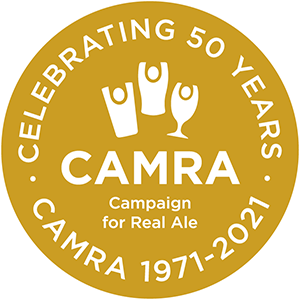Big Gun Hotel
South Yorkshire - Sheffield
One star - A pub interior of special national historic interest
This pub is currently closed (since 11/09/2023)
Lease expired September 2023. Pub then closed. Some work has occurred inside the pub.
Listed Status: Not listed
13-17 WickerSheffield, City Centre
S3 8HS
Tel: None
Facebook https://www.facebook.com/110588654050425
Nearby Station: Sheffield
Station Distance: 950m
Public Transport: Near Railway Station (Sheffield)
View on: Whatpub
A two-pubs-in-one surprise package. The L-shaped corner section is an amalgam of three original pub rooms – tap room, dram shop and snug (all once having their own separate street entrances) – and has a number of Victorian fittings, including the counter. The other (right hand) section of the premises, separately accessed is strikingly different. The narrow saloon bar here, an odd mix of late 1960s reconstruction and classy Victorian-style benches, leads to a glazed-in snug with similar seating and bell-pushes. The premises were built around 1900 for Wheatley & Blake Ltd, a local wine, spirit and cigar merchants.
A beer house has been on this site since 1796. The present building was built around 1900 by Messrs’ Wheatley and Bates Ltd, a local wine, spirit and cigar merchants. They also produced temperance drinks in a ‘black spruce beer brewery’ such as hop bitters, soda water, sarsaparilla and their specialty, ‘STYM’. Short for ‘Stimulate,’ STYM was advertised as the ‘Monarch of all Temperance Drinks.’ In 1948, they sold out to Sheffield-based, Hope and Anchor Breweries who wanted their bottling plant to bottle Jubilee stout.
Two entrances from the street lead to two contrasting bars (and a separate smoke room at the rear of the right hand bar). It almost looks like two pubs particularly following changes to the frontage in 1968 by Messrs. Charrington Yorkshire Breweries Ltd. who replaced the window with a new curved one.
On the left is a basic drinkers L-shaped public bar with three exterior doors. A June 1913 plan shows the left hand door down the side led to the ‘tap room’; the corner door led to the ‘snug,’; and the middle front door led to the ‘dram shop’ – a local word for a public bar. Only the corner door is now in use and inside is a rare draught screen dating from Victorian times, which is curved and painted a bright red colour. There is a short Victorian draught screen also painted bright red near the middle entrance. The bar counter dates back to Victorian times and has pilasters with decorative brackets all painted black and between them panels painted a bright red colour which replaced the original panels in 2014. The bar counter top is the original to which modern tiles have been added. The mirrored bar back fitting looks to date from around 1968, when changes were made in the saloon bar. At the rear of the public bar are the toilets and in front of the ladies’ on the right is an old screen painted black that is held in place by an iron stay attached to the wall; in front of the gents’ is another old screen – both are rare survivors. There is a 1960s fireplace in the rear left area.
On the right hand side of the building are two rooms. A 1913 floor plan shows originally there was a 'Wholesale Department' behind the right-hand door. This subsequently became an 'off-sales'. In 1968 the off-sales was lost, fixed seating added behind the new window and a new entrance lobby and door were added. The only changes since then are the removal of a small piece of fixed seating on the front left when a door was added to link the two bars.
The saloon bar is narrow with a bar counter that was changed in 1968 – it originally extended to the front wall so the left hand two-thirds was changed into the present curved section. The bar back looks to date from 1968. Down the right hand side of the room are two bays of Victorian fixed seating with the decorative bench ends that resemble a (acanthus) leaf – there were minor changes to the front end in 1968.
At the rear of the lounge bar beyond a part glazed partition wall is a snug (named as smoke room in the 1958 plans) still with its door and more of the Victorian fixed seating with decorative bench ends around the small room. On the 1913 floor plan this was originally described as an 'Office'. The seven bell pushes did work until they were disconnected some years ago. Above the fixed seating is panelling that looks more 1960s. 1983 saw the addition of new ladies toilets in the yard, with the existing ladies, at the rear of the right-hand room been extended and converted into a gents.
 Pub Heritage
Pub Heritage 